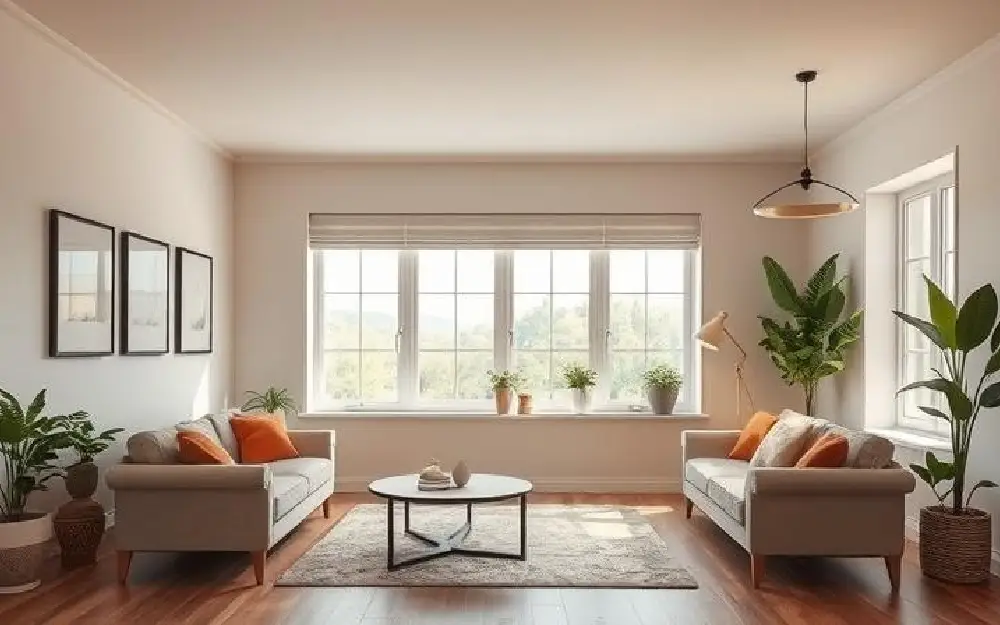
Sustainable Paints and Finishes for Your New Home: A Greener Approach to Home Design
When building a new home or undertaking a renovation project, one of the most exciting aspects is choosing the finishes and paints that will bring your vision to life. However, with growing concerns over the environment and human health, more homeowners are seeking eco-friendly alternatives. Sustainable paints and finishes are not only better for the planet but also contribute to a healthier living environment for you and your family.
In this blog post, we’ll explore the benefits of sustainable paints and finishes, the materials used in these products, and how they can be incorporated into your new home for a more environmentally conscious design.
Why Choose Sustainable Paints and Finishes?
- Healthier Indoor Air Quality
Traditional paints often contain volatile organic compounds (VOCs), which release harmful gases into the air. These chemicals can contribute to respiratory issues, allergies, and headaches, making your home less comfortable. Sustainable paints, on the other hand, are low in VOCs or even VOC-free, ensuring cleaner air inside your home. - Environmentally Friendly Ingredients
Many conventional paints are made with petroleum-based products that harm the environment. Sustainable paints use natural, renewable ingredients such as plant-based oils, resins, and pigments. This reduces the carbon footprint associated with their production and encourages more sustainable resource use. - Durability and Long-Lasting Beauty
Eco-friendly finishes are often just as durable, if not more so, than their traditional counterparts. With proper care, sustainable paints can stand the test of time, meaning fewer repaints and less waste. This contributes to a longer-lasting home that’s both beautiful and eco-conscious. - Support for Ethical Brands
By choosing sustainable paints and finishes, you are supporting companies that are committed to reducing their environmental impact. Many eco-friendly paint brands use sustainable production practices, such as sourcing raw materials responsibly, minimizing waste, and using recyclable packaging.
Types of Sustainable Paints and Finishes
- Water-Based Paints
Water-based paints are a popular choice for eco-conscious homeowners. Unlike oil-based paints, which use solvents that release harmful fumes, water-based paints use water as the primary solvent. This significantly reduces the level of VOCs and creates a safer, more breathable indoor environment. - Natural Paints
Made from ingredients like clay, lime, plant oils, and natural resins, natural paints are an excellent choice for those looking for the most eco-friendly option. These paints have been used for centuries and are free of toxic chemicals, making them a great choice for homes with young children or people with allergies. They also often come in a variety of earthy tones and textures that add to the natural aesthetic of your home. - Milk Paint
An ancient eco-friendly paint, milk paint is made from natural ingredients such as casein (a protein found in milk), lime, clay, and natural pigments. It has a unique matte finish and is biodegradable, making it an excellent choice for both interior and exterior surfaces. Milk paint is perfect for a rustic, vintage, or cottage-style home. - Mineral Paints
Mineral paints, such as silicate paints, are made from inorganic minerals like lime, cement, or glass. These paints create a durable, breathable surface that resists mold, mildew, and harsh weather. They’re ideal for both interior and exterior applications and are commonly used in historic building restorations due to their long-lasting qualities. - Plant-Based Finishes
In addition to eco-friendly paints, plant-based finishes like oils, waxes, and varnishes are becoming more common. These finishes are made from renewable plant sources such as linseed oil, tung oil, and beeswax. They provide a natural, protective finish for wood and other surfaces, adding a warm, rich texture to your space.
Eco-Friendly Tips for Applying Sustainable Paints
- Preparation is Key:
To minimize waste and ensure the longevity of your paint job, properly prepare the surface before applying paint. Clean, sand, and repair surfaces as necessary to avoid the need for multiple coats. - Opt for Lighter Shades:
Choosing lighter paint colors can help reflect more light and reduce the need for additional lighting in a room. This not only conserves energy but also enhances the overall look of your space. - Use Recycled or Reusable Tools:
Invest in high-quality brushes, rollers, and drop cloths that can be reused for multiple projects. Avoid disposable plastic tools and opt for reusable alternatives to reduce your waste footprint. - Consider Low-Impact Coatings:
If you're looking to add a finish or protect wood, consider low-impact options like beeswax or natural oils. These provide protection without the toxic chemicals found in traditional finishes. - Proper Disposal:
Be mindful of how you dispose of leftover paint. Many eco-friendly paints are easier to dispose of than traditional paints, but it's still essential to follow your local guidelines for proper disposal or recycling.
Popular Sustainable Paint Brands
- Benjamin Moore Aura: Known for its low-VOC content and durability.
- Behr Premium Plus: Offers a range of eco-friendly paints with zero VOCs.
- Farrow & Ball: Specializes in natural paints made from sustainable ingredients.
- ECOS Paints: Offers VOC-free paints with no toxic ingredients.
- The Real Milk Paint Co.: Focuses on natural milk paints that are free from synthetic chemicals.
Conclusion
Sustainable paints and finishes are an excellent choice for homeowners looking to make eco-conscious decisions while creating a beautiful, healthy living space. Whether you opt for natural paints, mineral finishes, or low-VOC options, you can feel confident that your choices will contribute to a greener planet and a safer home.
By incorporating eco-friendly materials into your new home, you’ll not only reduce your environmental footprint but also enjoy a stunning, well-crafted living environment for years to come.
Is sustainability a top priority in your new home design? What eco-friendly finishes or paints are you most excited to try?


